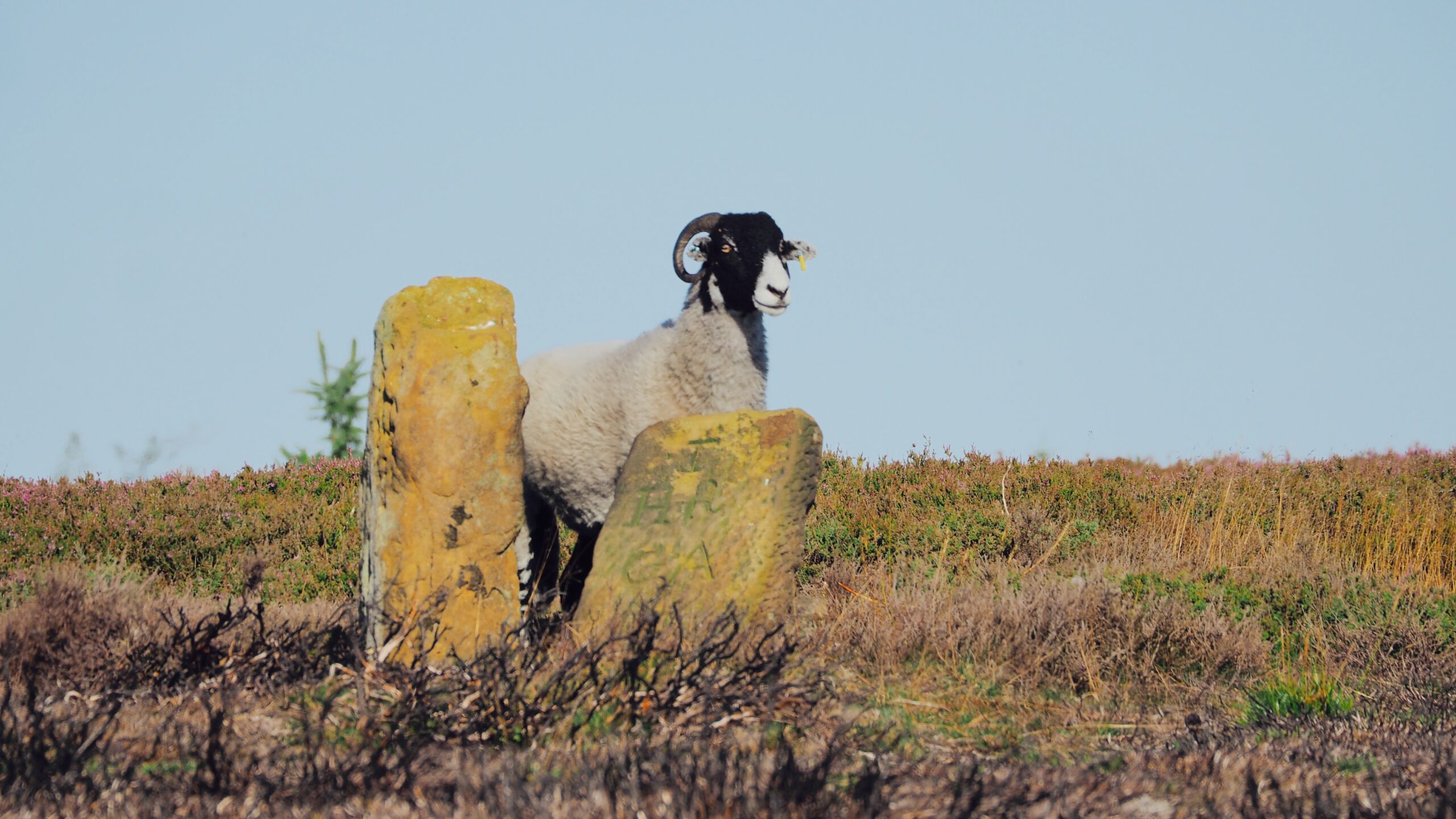The yow was waiting for me. At least, that is how it felt. She stood beside two boundary stones as if on sentry duty, a glint of mischief in her eye and a smile that gave nothing away. Mona Lisa would have approved.
One stone is plain but upright, the other broken and almost recumbent, resting against its base. Its surviving inscription reads “T HR GA 6”. These stones mark the boundary between the parishes of Hutton and Great Ayton1NYMNPA HER No: 17962. A pair of boundary stones on Hutton Moor.
Cleveland HER SMR: 3681/7206. Boundary Stones.. “GA” is surely Great Ayton. “HR” points to Henry Richardson, who took possession of the manor in 1801, died without heirs in 1813, and left it to Elizabeth Proctor2British History Online. https://www.british-history.ac.uk/vch/yorks/north/vol2/pp225-231#:~:text=He%20sold%20Great%20Ayton%20in%201801%20toHenry%20Richardson%2C%20(fn.%2059)%20a%20member%20of%20a%20well%2DknownQuaker%20family%20which%20had%20lands%20at%20Langbaurgh.%20(fn.%2060)%20Henry%20Richardson%20died%20in%201813%20(fn.%2061)%20without%20issue. That short span is almost certainly when the stone was raised.
The “6” is likely its place in a numbered sequence. The “T” is less obliging. Some think it means Township, a nod to the days when this was the edge of the Township of Great Ayton, one of three—alongside Little Ayton and Nunthorpe—that made up the Ancient Parish of Great Ayton3The Megalithic Portal. https://www.megalithic.co.uk/article.php?sid=60452#:~:text=As%20for%20the%20%E2%80%98T%E2%80%99%20a%20wild%20guess%20would%20be%20Township.
- 1NYMNPA HER No: 17962. A pair of boundary stones on Hutton Moor.
Cleveland HER SMR: 3681/7206. Boundary Stones. - 2
- 3

Leave a Reply